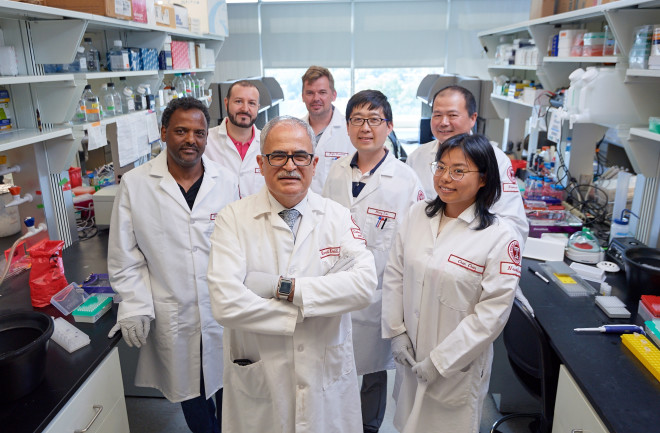Nearly 37 million people have human immunodeficiency virus (HIV), the cause of AIDS. The go-to treatment for the infection, antiretroviral therapy (ART), can prevent the disease’s progression, allowing people to live longer and healthier lives. But even with ART, the virus still lingers in the body by copying itself into the DNA of infected cells.
This year, researchers described a new form of ART which, in combination with CRISPR gene editing, eradicated the virus during testing on mice — a big step toward new therapeutic avenues for HIV patients.
To mimic a human infection in mice, the researchers used “humanized mice,” which make human immune cells, rather than mouse immune cells. These human cells are susceptible to HIV. When the team injected the mice with the virus, they saw the infection take up residence in the places it would in humans: in DNA in cells in the lymph nodes, spleen, liver, lungs and brain.
The team used the mice to test a new, so-called “long-acting slow-effective release” (LASER) ART treatment. The therapy uses retroviral nanoparticles that take more time to dissolve and persist longer in the body, to prevent the virus from replicating. They found that LASER ART, administered every few weeks rather than daily, stopped 99 percent of the virus’ replication. But, as with standard ART, the new treatment could not remove any part of the virus that had already entered a patient’s DNA.
So for the final punch, the researchers used CRISPR gene editing to cut out the virus’ DNA from the genomes of the infected mice. This eliminated all traces of HIV from more than 30 percent of the mice, the team reported in July in the journal Nature Communications.
“Our findings show for the first time that HIV can be cured from an infected cell and the cell will remain virus-free,” said Temple University virologist Kamel Khalili, one of the senior investigators leading the research. He says the results show promise for moving ahead within a couple of years to trials in non-human primates and, eventually, to humans.
[This story originally appeared in print as "Editing Out HIV."]

